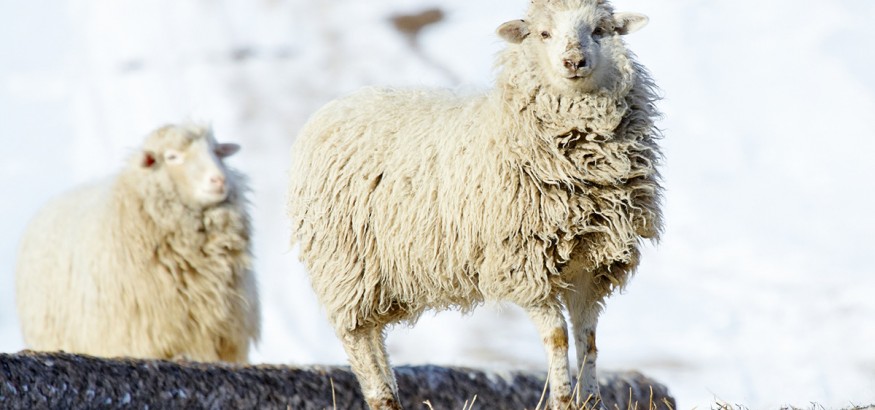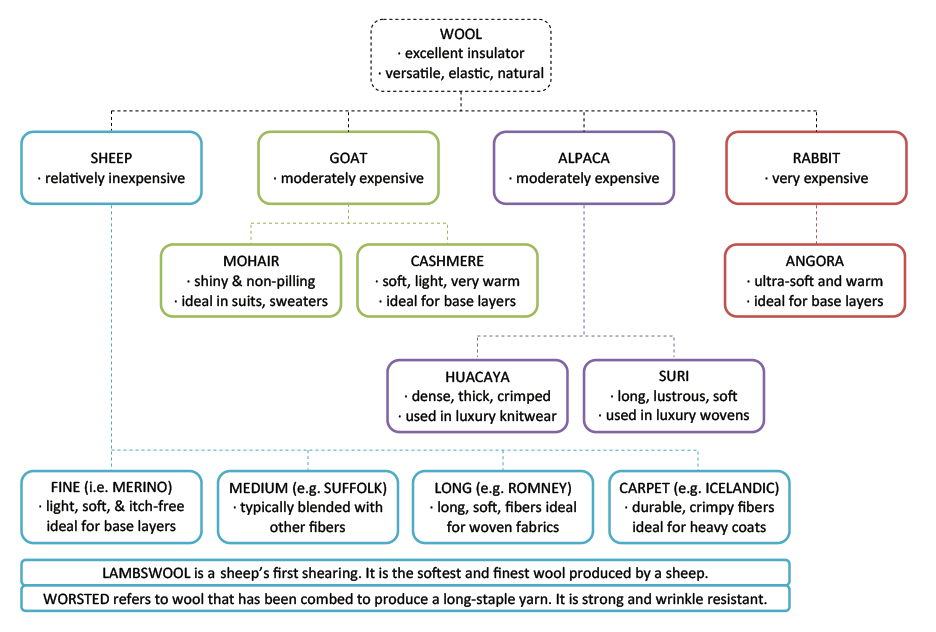Types of Wool Used in Clothing
As the cold winter months approach, there’s no denying that your best defense against the elements is wool. Wool’s popularity is owed to its insulating properties, feel, and aesthetics. But even wool-lovers sometimes get confused with differentiating the various types of wool found in the market today. To add to this confusion, the term “wool” is sometimes used to describe fibers from animals other than sheep.
The top four types of wool are derived from sheep, goats, rabbits, and alpacas. Each type of wool has its own set of properties which make it better suited for certain applications than others. The following chart provides a breakdown of the commonly used wools in clothing.
In determining whether wool is a suitable fiber for your needs, consider the following distinct properties of wool:
- Wool fibers are hollow and can absorb up to 30% of their weight in moisture without feeling damp. It’s for this reason that wool socks are used in the winter to keep feet warm, as well as in the summer to prevent blisters.
- Wool is naturally anti-microbial, and therefore odor resistant. Wool works in several ways to discourage microbial growth: 1. its scaly, no-charge surface is not ideal for bacterial growth; 2. its moisture-absorbing fibers lock away the moisture needed by microbes to thrive; and 3. certain natural compounds on the surface are anti-microbial. These properties allow wool socks to be effective against foot odor.
- The crimp in wool fibers creates air pockets that retain heat. Combined with its light weight, wool makes for an excellent insulator. Wool is also very flexible which makes it the ideal choice for moisture-absorbing base layers.
It should be noted that the quality of wool is typically determined by the length and diameter of fibers. Longer and finer fibers produce stronger and softer fabrics, respectively. These properties, along with the scarcity of the fiber, determine the market price of wool. Consumers of wool clothing can expect to pay a premium over similar clothing made from other textile fibers (e.g. cotton, acrylic, polyester) due to the high cost of producing wool. However, most would agree that it’s well worth it – especially considering the unique properties of wool.
About the author
EVERSOX is a worldwide supplier of custom branded socks for businesses, retailers, and promotional products distributors — with over 10,000 designs manufactured & 100 major brands served since 2010.



Comments are closed.